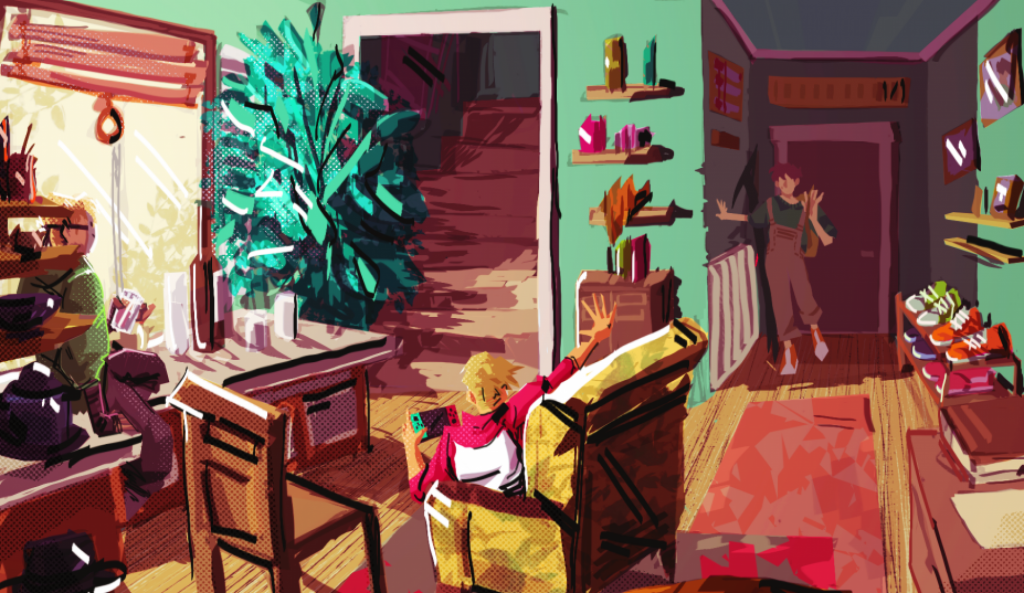The third, the last, week of this rotation started by studying and understanding the ‘normal’ walk cycle and the on our own head turn while deciding our own timing and spacing.
PRACTISE EXERCISE: WALK CYCLE
‘Normal’ walk cycle is achieved by drawing contact, down, pass position, up pose frames for a single step and then tracing them but changing legs and hands positions.
The exercise started by drawing the simple figure and setting correct positions for leg movement, without and hands yet.
Second stage – adding hand movements and more in-betweens. I struggled a bit with keeping arm’s length consistent but then I started using marks on the figure’s torso to help me indicate the arc of the moving elbow.
After that, final in-betweens were the only ones left for me to do for the first step of the walk cycle.
Using the first step’s frames as a guideline, I traced the shape of the figure and changed the arms and legs positions. By doing this, I completed the full walk cycle!
I decided to add a character on top of it. With very small secondary action in his ponytail.
PRACTISE EXERCISE: HEAD TURN
The second exercise of the week – head turn. From the start, I spent good two hours designing and figuring the story, the action, the timing. It was the first time while in this workshop that I had a chance to work with my own timing.
I wanted to make a character with the hat as his prominent design feature. I wanted him to be some sort of traveler, explorer. With longer hair braded and tied for conviniece sake. I added some details to indicate his scruffness such as uneven hat lining, few scars and one braid being shorter than the other, cut or sliced when he was escaping from something perhaps.

For his head turn I wanted to start from him having a pleasant conversation, and perhaps hearing someone yelling his name, he turns around without any hurry and notices a dark menacing cloud of smoke approaching. The face of surprise and shock.

By using the head structure, I made a simplified head turn with only keyframes to find the correct arc of movement for the head to follow.
After determining the timing and spacing for the structure, I started adding details and facial expressions. Also, because it was one of the points in the brief we received for this workshop, secondary action in hair braids and ponytail.
